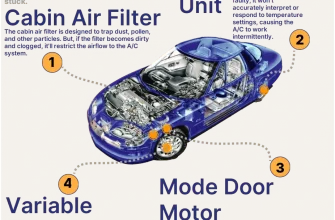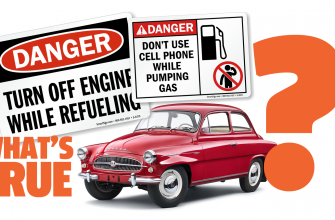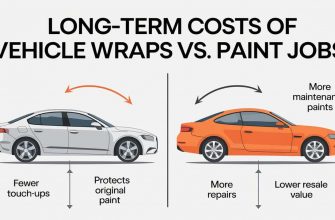When driving, one of the most crucial safety considerations is maintaining an adequate following distance behind the vehicle in front of you․ This distance can be the difference between a safe drive and a potentially dangerous collision․ But how do you calculate the ideal following distance? Let’s dive into the details․
Understanding the Importance of Following Distance
Following distance refers to the space between your vehicle and the vehicle ahead․ This distance gives you enough time to react to sudden stops or emergencies․ In fact, many accidents occur due to tailgating, where drivers are too close to the vehicle in front, reducing their reaction time․ Ensuring a safe following distance can prevent accidents, enhance road safety, and provide peace of mind while driving․
The Two-Second Rule
A widely accepted method for calculating a safe following distance is the two-second rule․ This simple technique can be applied in various driving conditions:
- Choose a Fixed Point: As the vehicle ahead passes a stationary object (like a sign or a tree), start counting seconds․
- Count: If you reach the stationary object before you finish counting to two, you are following too closely․
This rule applies under ideal conditions․ However, in adverse weather conditions or heavy traffic, it’s advisable to increase this distance to three or even four seconds․
Factors Affecting Following Distance
Several factors can influence how much following distance you should maintain:
- Speed: The faster you drive, the longer it takes to stop․ Thus, you need to increase your following distance as speed increases․
- Weather Conditions: Rain, fog, snow, or ice can significantly reduce traction, requiring you to extend your following distance․
- Road Conditions: Uneven or poorly maintained roads can affect stopping distances, making it necessary to allow for more space․
- Vehicle Size: Larger vehicles may take longer to stop than smaller cars, so adjust your distance accordingly․
Calculating Stopping Distance
To further understand the importance of following distance, it’s essential to consider the concept of stopping distance․ Stopping distance is the total distance a vehicle travels from the moment a driver perceives a hazard until the vehicle comes to a complete stop․ This is comprised of:
- Perception Distance: The distance your vehicle travels while you recognize a hazard․
- Reaction Distance: The distance covered while you react to the situation and apply the brakes․
- Braking Distance: The distance your vehicle travels while it comes to a stop after the brakes are applied․
On average, at 60 mph, a vehicle can take about 200 feet to stop, which emphasizes the need for a safe following distance․
Calculating a safe following distance is not just about adhering to the two-second rule; it’s about being aware of the surrounding conditions and adapting accordingly․ Remember, safety should always be your top priority on the road․ By maintaining an appropriate following distance, you not only protect yourself but also contribute to the safety of all road users․
Next time you’re on the road, take a moment to assess your following distance․ It could make all the difference․
Tips for Maintaining a Safe Following Distance
Now that we’ve established the importance of following distance and how to calculate it, let’s explore some practical tips to ensure you maintain a safe space on the road:
- Stay Alert: Always keep your focus on the road ahead․ Distractions can cause you to misjudge your following distance, so minimize in-car distractions like phone use or loud music․
- Use Cruise Control Wisely: While cruise control can help maintain a steady speed, it’s crucial to disengage it in heavy traffic or adverse weather conditions where quick reaction times are necessary․
- Adjust for Traffic Flow: In heavy traffic, vehicles may frequently change speeds, requiring you to be flexible with your following distance․ Be prepared to adjust based on the behavior of the vehicles around you․
- Monitor Your Speed: Regularly check your speedometer․ Speeding reduces your reaction time and increases stopping distance, making it essential to adjust your following distance accordingly․
- Keep an Eye on the Road Conditions: Be aware of potholes, debris, or construction zones that may affect your vehicle’s stopping capabilities․ Alter your following distance if the road is uneven or requires extra caution․
Technology and Following Distance
In today’s world, many vehicles are equipped with advanced driver assistance systems (ADAS) that can help maintain safe following distances․ Features such as adaptive cruise control and collision warning systems can alert you when you’re following too closely․ However, it’s essential to remember that technology should assist, not replace your judgment as a driver․
The Role of Defensive Driving
Defensive driving techniques play a significant role in ensuring a safe driving experience․ This approach emphasizes the importance of anticipating the actions of other drivers and being prepared for unexpected situations․ Incorporating defensive driving principles alongside maintaining a safe following distance can enhance your overall safety on the road․









Great article! The two-second rule is something I will definitely implement in my driving habits from now on.
This article provides essential tips on maintaining a safe following distance. The two-second rule is simple yet effective!
This piece highlights the importance of following distance perfectly. It
I really appreciate the emphasis on adjusting following distance based on weather conditions. It
The explanation of factors affecting following distance is very informative. I learned a lot about how speed and road conditions impact safety.
I love how this article breaks down the calculation of following distance. It makes it so much easier to understand for new drivers.